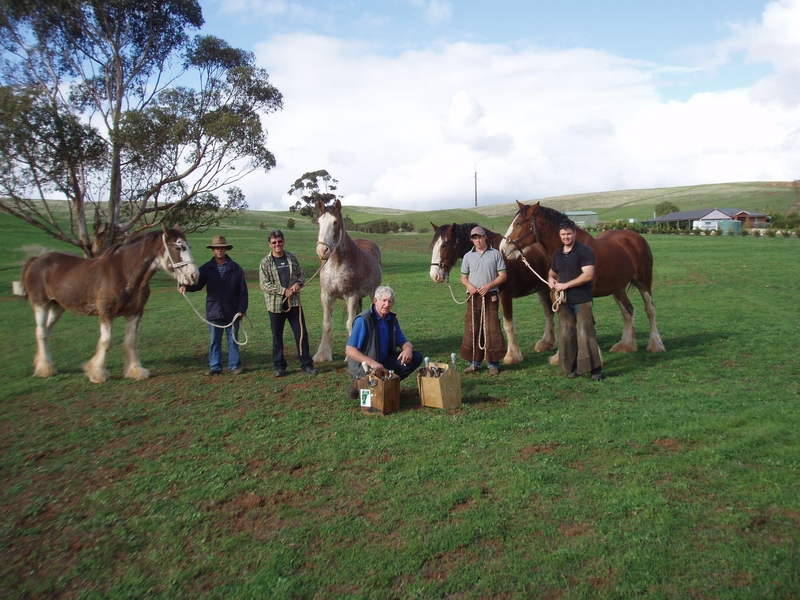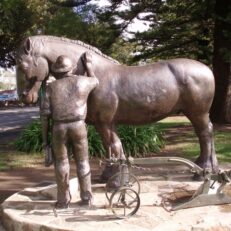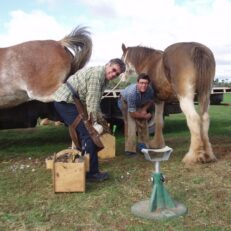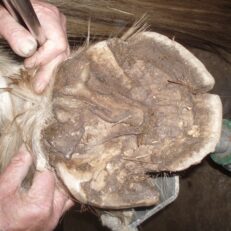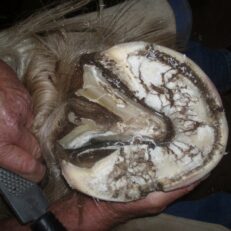Big or small it has to be hoof maintenance for all – this has always been my motto as a farrier.
However for some strange reason which eludes me, in today’s modern farriery world there seems to be a tendency to work only on selected types and breeds of horses; this is a disturbing change for us older tradesmen to understand.
The old feller who taught the old feller who taught the old feller who taught me would have been proficient enough at his trade to be able to trim and shoe any horse that was presented to him; whether it was a small pony or a tall draft horse, it was considered to be all part of his skilled trade and a demonstration of his versatile ability.
This modern trend to ‘specialise’ in shoeing specific breeds or types surely has to be doing our industry image no good, and it’s the same trend in the USA as well as in other countries.
I am of the opinion that the real cause of this trend goes back to the lack of sound education about basic hoof anatomy in our farrier training from day one of the modern day farrier’s schooling.
The anatomical structure of the hoof is the same in all breeds regardless of whether they have upright or sloping pasterns; the balance in the bottom of the hoof will thus follow those requirements to achieve a correct hoof / pastern angle; the requirements of the shoe will also be appropriate for the varying pursuits, and the only thing that changes is the size of the horse.
That only leaves one variable factor to explain why so many of today’s farriers are no longer willing to provide hoof care for all horses – they are not trained to be general farriers and to be proficient with all breeds big or small, and I believe our trade accreditation should test applicants on that general ability.
As a working farrier I am asked continually by horse owners to refer them to a farrier in their area who will work on small or large horses and the reply all too often comes back ‘No, that they will only work on quiet horses between 14hh to 16hh, and are not interested in miniatures or Clydesdales or racehorses or any different breeds.’
I was always taught to lead by example so anyone who has been under my tuition learns to provide hoof care to whatever equine is on the list for the day and may include standardbreds, thoroughbreds, Spanish horses, Clydesdale broodmares and Clydesdale stallions, minis, foundered ponies, donkeys and so on. Being versatile is the only sure way to learn.
From an early age the Clydesdale breeder or owner has a specific idea as to the horse’s future role, whether it is showing in hand or cart and saddle work.
For traditional showing, the Clydesdale horses are required to have Scotch Bottom shape, ie the fronts are egg shaped on wide sides and flat toes. The hinds must be toed out with straight medial walls and flared lateral heels to encourage the hocks to touch when standing.
Both of these styles fall within my principles of balance on the HOOF-LINE ruler regarding the 19mm reference point on the frog.
The egg shaped fronts measure shorter at the toe and the heels because of the more upright style, and the hinds measure equally from the toe to the medial heel with the lateral heel being higher and shorter to enable the horse to stand cow-hocked.
The Clydesdale under saddle or cart work has normal shaped hooves so my HOOF-LINE is used in the normal way.
